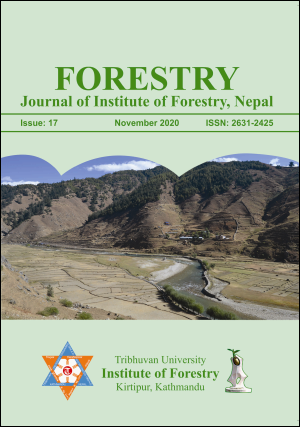Breeding seasonality of Chital (Axis axis) in the Hetauda Valley of Nepal
DOI:
https://doi.org/10.3126/forestry.v17i0.33634Keywords:
Hard antler, velvet antler, shed antler, bellowing, fawningAbstract
Breeding seasonality of Axis axis differs from place to place mainly due to the difference in vegetation and climate. In Nepal, although Chital is found all over the lower Terai region, studies on breeding seasonality are limited. In this study, we observed the annual cycle of antler renewal and casting, monthly changes in frequency of bellowing call and ratio of new born fawn to adult and sub-adult females from October 2016 to March 2019. Seasonal peak of proportion of hard-antlered males was found in June and seasonal peak of bellowing call frequency was found in May. Seasonal peak of fawning occurred in December, January and February, at the beginning of dry season before monsoon, probably to coincide with the energy demanding late lactation season with excessive food available in rainy season. From antler cycle, bellowing call frequency and fawning frequency data, peak breeding season was identified as May-June. This information can be crucial in nutritional management, herd composition, and translocation period determination for in-situ and ex-situ species management programs.
Downloads
Downloads
Published
How to Cite
Issue
Section
License
© Tribhuvan University, Institute of Forestry




